Seeing the light: Laser-based visible light communications
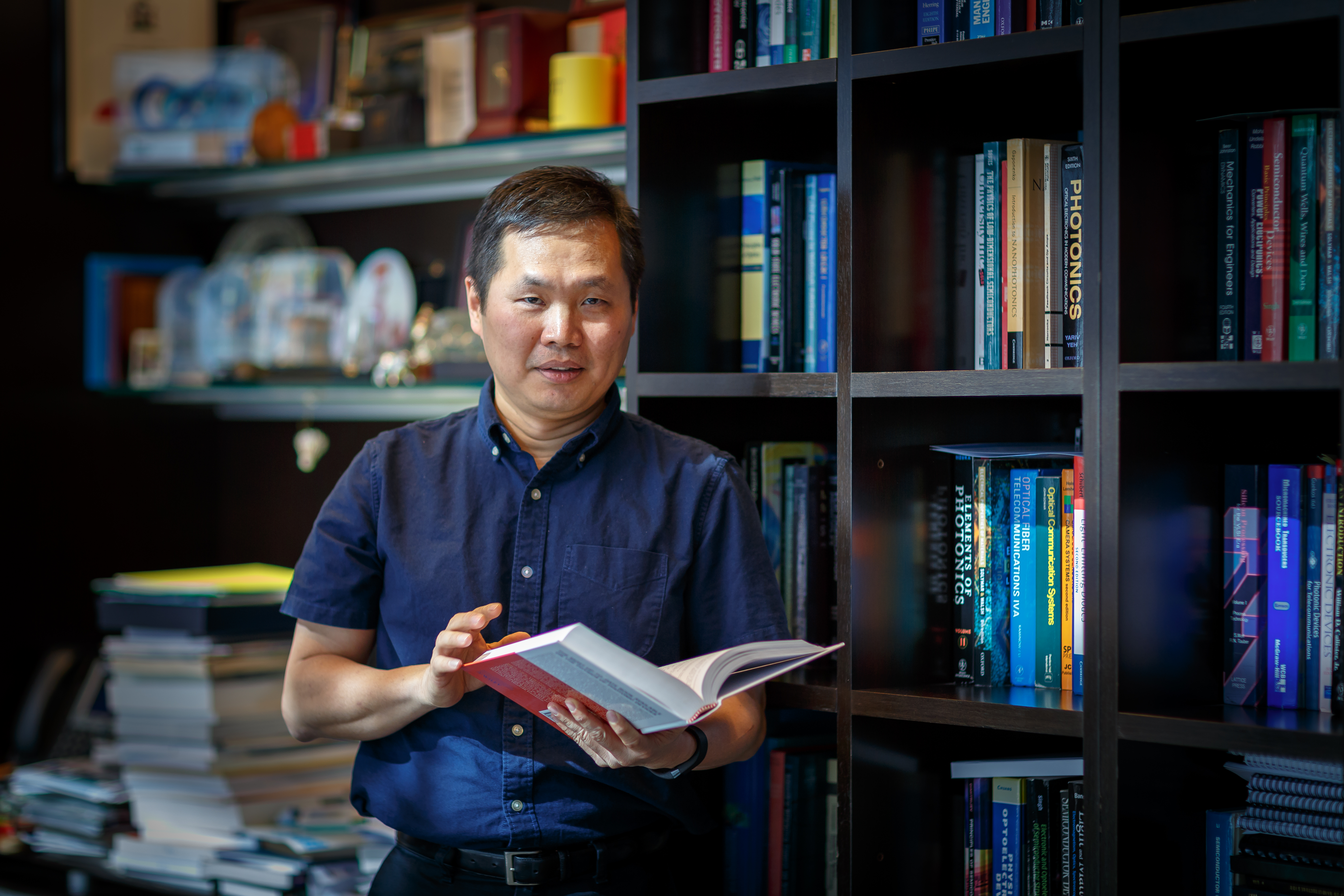
Boon Ooi, KAUST professor of electrical engineering (pictured), Nobel laureate Shuji Nakamura and colleagues work on using lasers for visible light communications. Photo by Asharaf K. AbdulRahman.
-By Caitlin Clark, KAUST News
In 2014, KAUST Professor Boon Ooi, researchers including Nobel laureate Shuji Nakamura from the University of California, Santa Barbara (UCSB) and King Abdulaziz City of Science and Technology (KACST) signed an agreement to work together on laser-based solid state lighting (SSL), a type of lighting that may save more energy than light-emitting diode (LED) lighting.
SSL refers to a class of lighting that uses semiconductor light emitting devices as the lighting source. LED lighting is currently the dominant type of SSL, consisting of layers of semiconductor materials that emit light through a process called spontaneous emission. LEDs are more energy-efficient compared to other traditional bulbs—like incandescent and halogen bulbs—because LEDs convert a large percentage of electrical energy into light.
Nobel laureate Shuji Nakamura (left) and KAUST Professor Boon Ooi (right) are pictured together on the KAUST campus in June 2015. The professors and their international colleagues work together on using lasers for visible light communications. File photo.
In the current collaboration, Nakamura and his team grow the laser material structures out of high-quality gallium nitride (GaN) and its related materials according to the KAUST scientists' design.
"Back at KAUST, we then apply nanofabrication techniques to the laser wafer grown at UCSB to convert it into high performance semiconductor laser devices," Ooi explained. "We also carry out the necessary characterization steps on campus—especially in the KAUST Core Labs facilities—and bring the device to the system level applications."
Nakamura, Ooi and the other researchers are excited about their work with semiconductor lasers and their future applications—among which are the use of lasers for visible light communications (VLC) and underwater communications.
Li-Fi vs. lasers
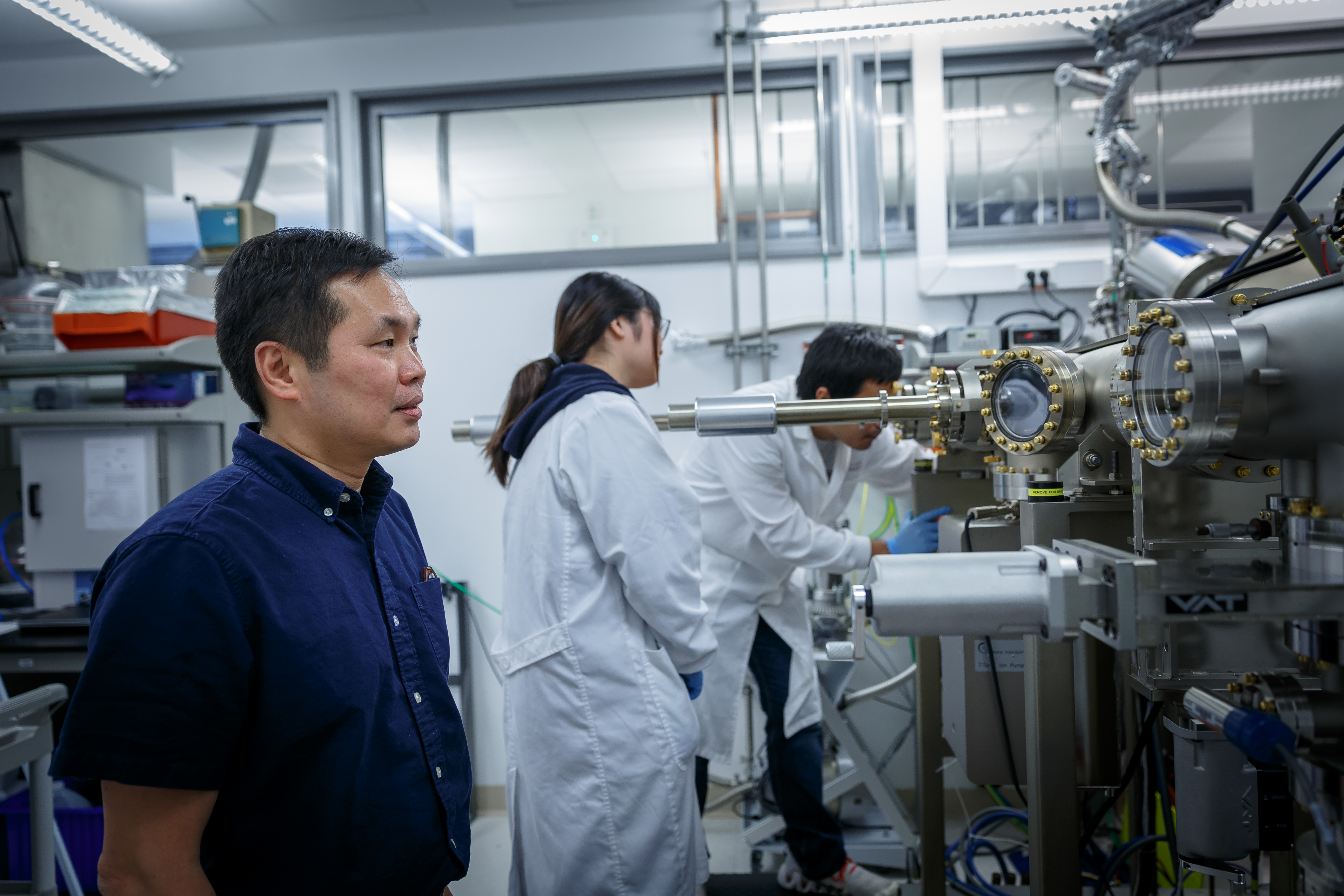
KAUST Professor Boon Ooi and two of his students work together in his Photonics Laboratory on campus. Photo by Asharaf K. AbdulRahman.
The current type of VLC system is Li-Fi, or light fidelity, and uses the visible light from LEDs to transfer data in the form of the bulb's ultra-rapid flickering. In contrast, the widely used Wi-Fi system uses radio waves to transmit data.
"In our lab, we are investigating using semiconductor lasers made from indium gallium nitride (InGaN) and GaN for VLC, and we demonstrated that this system can be more than 20 times faster than the LED Li-Fi," Ooi explained. "LEDs can generate white colored light and we use them for energy-efficient lamps, but with lasers, we save more energy and we send data even faster."
Underwater communications
Ooi and the team, in collaboration with KAUST Professor Mohamed-Slim Alouini's research group, decided to take their new technology a step further and employ it in underwater communications, a problem that came to them from Saudi Aramco.
Aramco wanted to send video signals in real time from, for example, mini submarines on the seafloor carrying out seafloor analyses up to a boat.
"There is no way we would be able to send such a large amount of data through soundwaves, which is the typical way to communicate underwater. Soundwaves are very slow," Ooi explained. "Another way of communicating under water is through using microwaves or radio waves like we use for our cell phones, but these do not propagate too long underwater."
Laser-based VLC allows signals to be sent from the seafloor directly to a boat above in real time and also opens up many different opportunities. For example, sensors could now be used on the seafloor to constantly monitor it and send back data. Aramco is also interested in using the system to monitor its underwater pipelines.
"Aramco's underwater pipelines require constant monitoring for corrosion and accidents like leaks that could cause an environmental catastrophe," Ooi said. "The company presently uses divers to inspect the pipelines, but this is difficult to carry out over the entire pipeline network. Sending a robot that could constantly scan the pipelines and send information up through underwater communications would be ideal."
Ooi and Alouini's groups continue to work on developing underwater communications in the lab, and they hope to implement a test in the Red Sea by the end of 2018.
"There are still many things that need to be done before our technology can become a real system implementable in submarines or for diver communications, but we have confidence in establishing it in the future and improving it in the real environment," he said.
Innovation and entrepreneurship in light communications
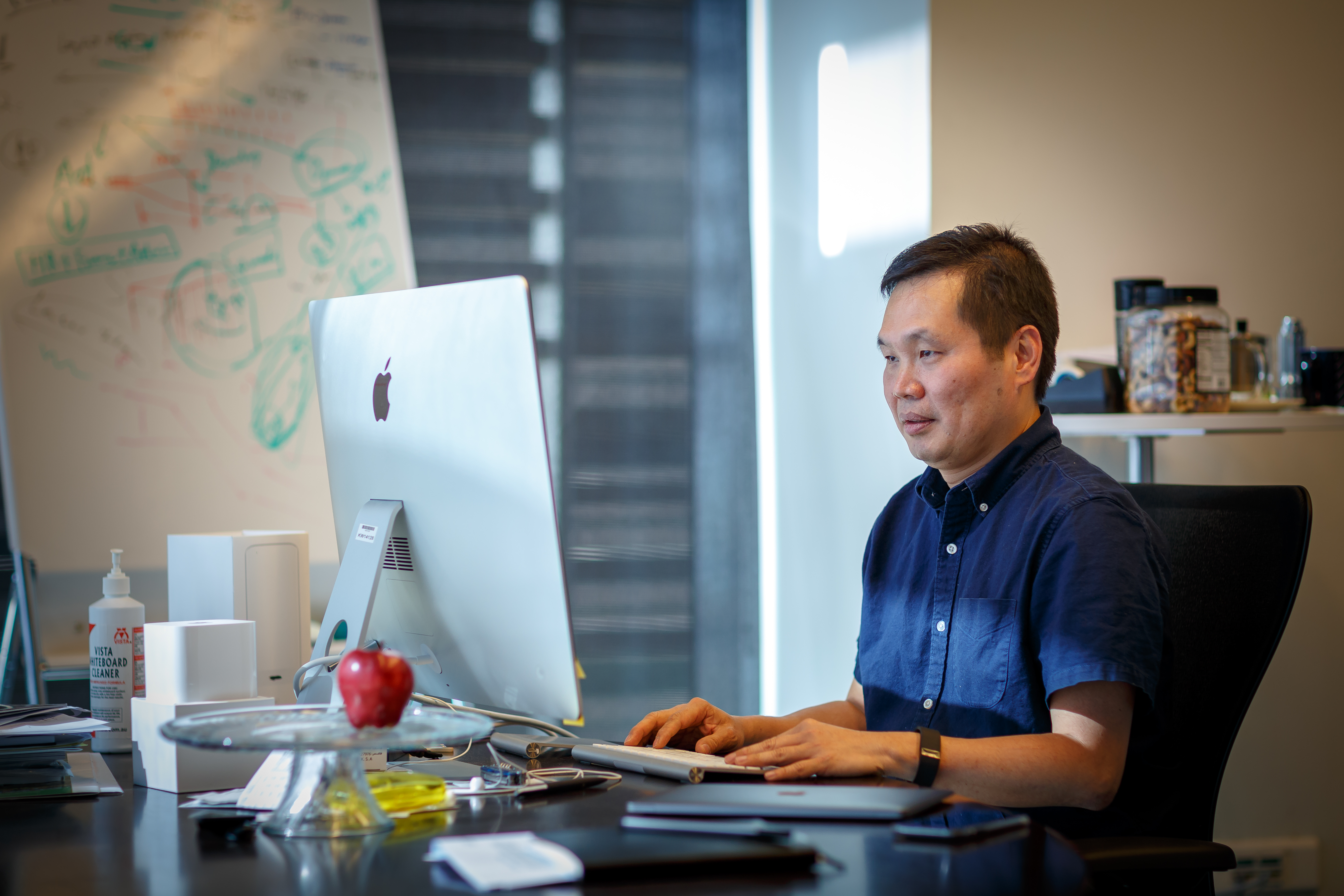
Boon Ooi, KAUST professor of electrical engineering, works with a team of international colleagues on using lasers for visible light communications. Photo by Asharaf K. AbdulRahman.
"Most luxury cars use LED lighting for their headlamps, but laser headlamps have begun to be introduced by Audi and BMW," Ooi said. "The laser light they use allows you to see beyond 600 meters. In rural areas, being able to see beyond 500 meters is very important, but LED only allows you to see around 300 meters. With laser lights we're developing, we hope to be able to view a kilometer."
Another application of laser-based VLC in car headlamps and back lamps is using the light communication to "talk" to other cars or even to streetlights on the roadways.
"This kind of communication is ideal for safety issues—for example, if a car has an accident, it can communicate with the cars in front of and behind it to inform them of the situation. As cars use more computer-based control systems, the headlamps and the back lamps can integrate with these systems, controlling the car to slow it down or communicate with streetlights and other infrastructures to alert the police of any accidents," Ooi explained.
Innovations like these will become more important with the increase of autonomous or self-driving cars on the roads, noted Ooi. With the use of laser-based VLC, car headlamps can see further ahead than the human eye, leading to increased ranging and imaging capabilities integrated into the car and better car safety and intelligence.
Ooi and the Optical Society of America
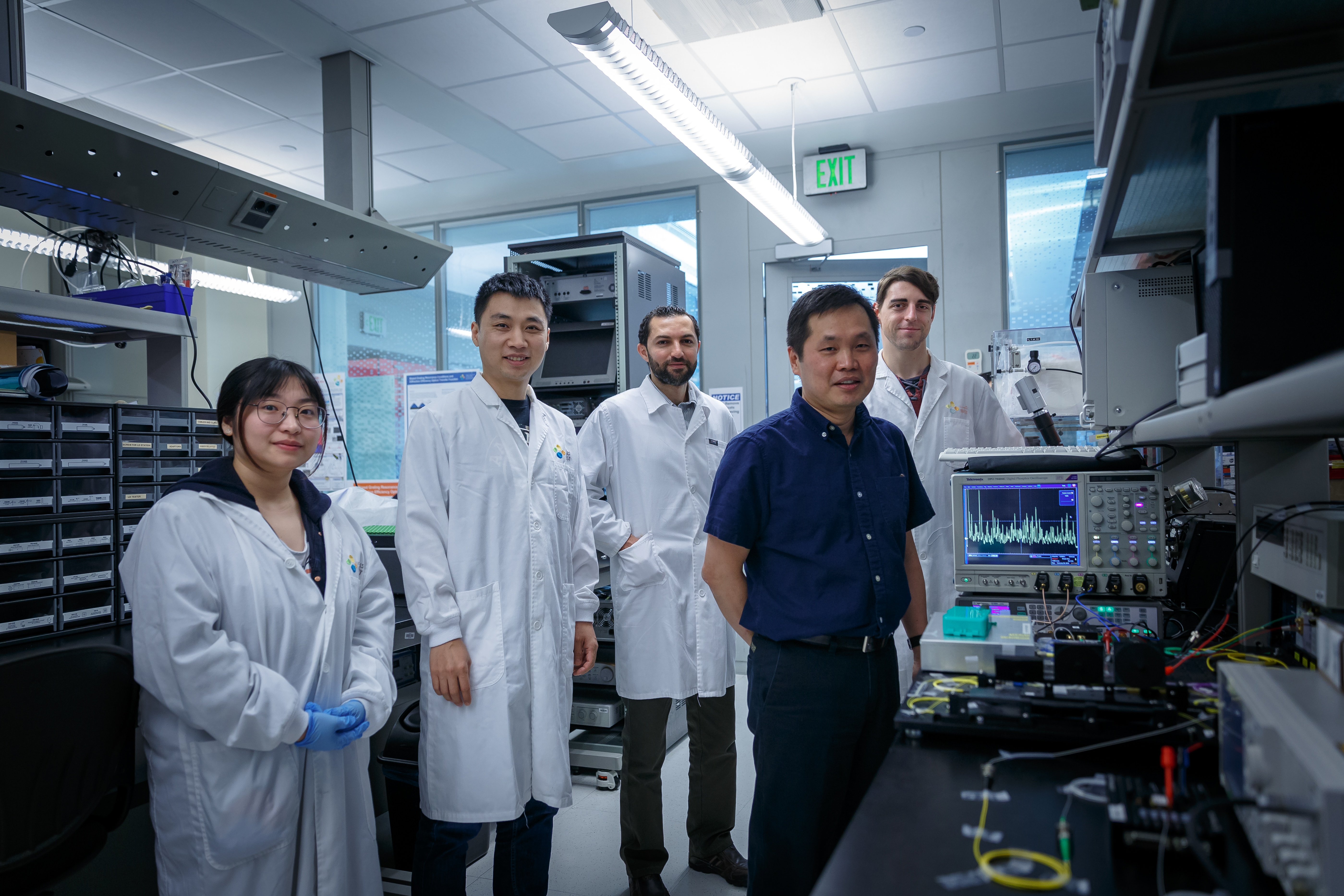
KAUST Professor of Electrical Engineering Boon Ooi stands with some of his students in his Photonics Laboratory on the KAUST campus. He was recently elected as a Fellow of the Optical Society of America. Photo by Asharaf K. AbdulRahman.
According to the OSA, Ooi is recognized for his work on pioneering contributions to optoelectrionic device technologies, and particularly in light emitting devices in visible wavelengths, and their applications to lighting and optical communications.
"The award recognizes the new field we started in laser lighting and in high data rate visible light communications," Ooi said. "I feel it is a milestone in my career, but I cannot claim all the credit myself—my students, postdoctoral fellows, colleagues and collaborators all worked together to make this happen. It is an important recognition and I look on it as a great honor."
The future and VLC
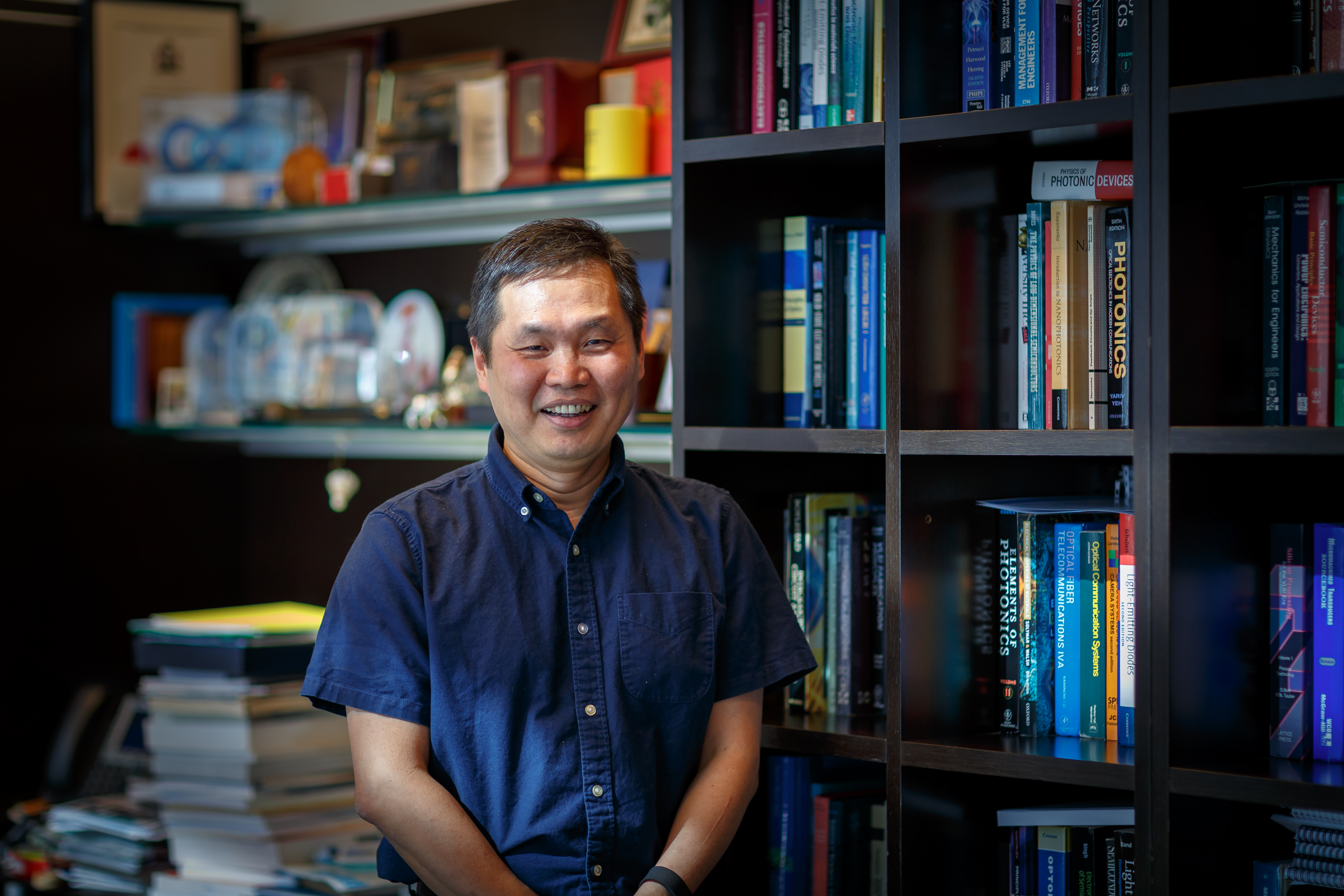
KAUST Professor of Electrical Engineering Boon Ooi hopes to move his and his colleagues' research work into producing ultraviolet (UV) semiconductor lasers in the future.Photo by Asharaf K. AbdulRahman.
"We have received a renewal of our tripartite agreement for another six years starting on January 1, 2018. Nakamura is a guru in laser structures, and no one else can grow better laser quality InGaN/GaN," Ooi said. "Our collaboration is very healthy, with UCSB sending their students to test their devices in our lab. KACST also sends their engineers to receive training at KAUST, and sends several of their engineers to complete their Ph.D.s at the University. "
Ooi and the team are now moving into new developments, which include the use of ultraviolet (UV) light to generate white light. UV light falls in the electromagnetic spectrum between 200 and 400 nanometers and is not visible to the human eye.
"Reliable UV semiconductor lasers do not yet exist, so the first thing we will work on is producing UV semiconductor lasers. This will open up even broader applications," Ooi explained. "Laser light functions as point-to-point, but UV light communication does not work this way, and you don't need to align your photodetector to a tiny spot of light—this is the advantage. We call the technology 'non line of sight.'
"We want to become the leader in this particular field—sending a signal through scattered light is the next phase for our team's investigations."
Related stories:
-
KAUST-Nobel Laureate Collaboration Bringing Light to the World
-
Boon Ooi elected a fellow of the Optical Society of America
-
KAUST and Aramco break ground

